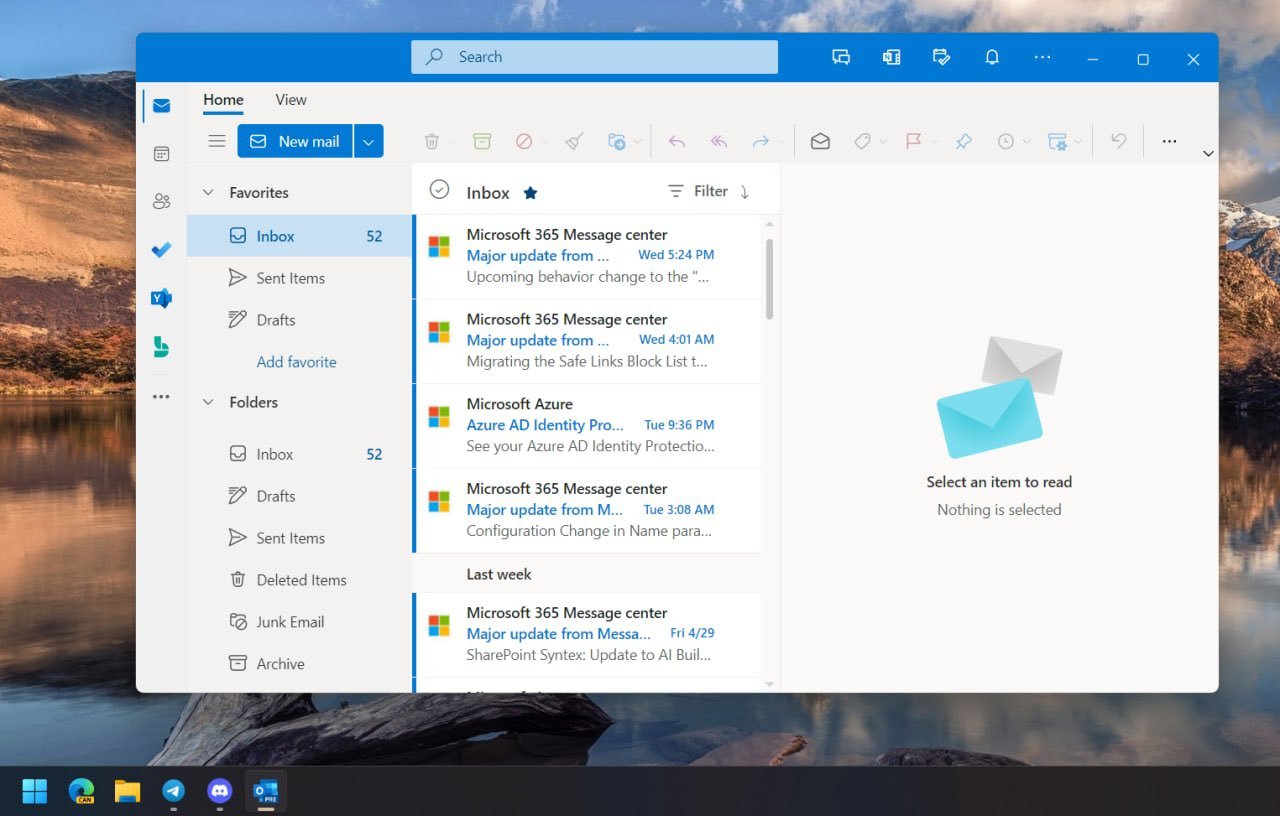The new email client for its Outlook service Microsoft of Windows, it is called “One Outlook”. The company has reportedly been preparing it for quite some time, and it looks like it's almost ready. Some users have been able to download the new app, but right now it only works for work and educational accounts.

We've been hearing for a long time that the future of Microsoft mail clients will be very similar to Outlook web application and indeed, the new application seems to be exactly the same. It is much lighter and simpler than previous versions of Outlook for Windows and much more powerful than the built-in Mail application to be replaced.
Microsoft's new One Outlook email client has leaked. It's a web-based version that will eventually replace the built-in Mail app on Windows and even win32 Outlook itself. I'm expecting a public insurance beta at Build, and full Outlook replacement in a couple of years. Image: Temmie pic.twitter.com/6c3aqxC7L9
- Tom Warren (@tomwarren) May 6, 2022
"We appreciate the excitement for our next update and will have more to share in the coming weeks," Scott Stiles, vice president of product management for Outlook, told The Verge.
"The version available for download is an early unsupported trial version of Outlook for Windows and lacks some of the features and enhancements available for beta testers. We encourage our customers to wait for the beta release. ”
The app was supposed to be tested in 2021, with plans to eventually replace other clients this year. Now, it looks like Microsoft will officially announce the new app at the Build developer conference at the end of this month and it will replace the Mail apps, Calendar and other versions of Outlook. As for performance? We will have to wait until we install the beta version.
Switching from one client to another won't be easy, as there are many Outlook users who have a long history of doing so operation of the app, and the new experience based on the leaner, cleaner web app will feel like a huge discount. This means that, at least for a while, Microsoft is very likely to continue to develop multiple versions of Outlook for users. However, its path forward is clear: in the future, there will be only one Outlook.





